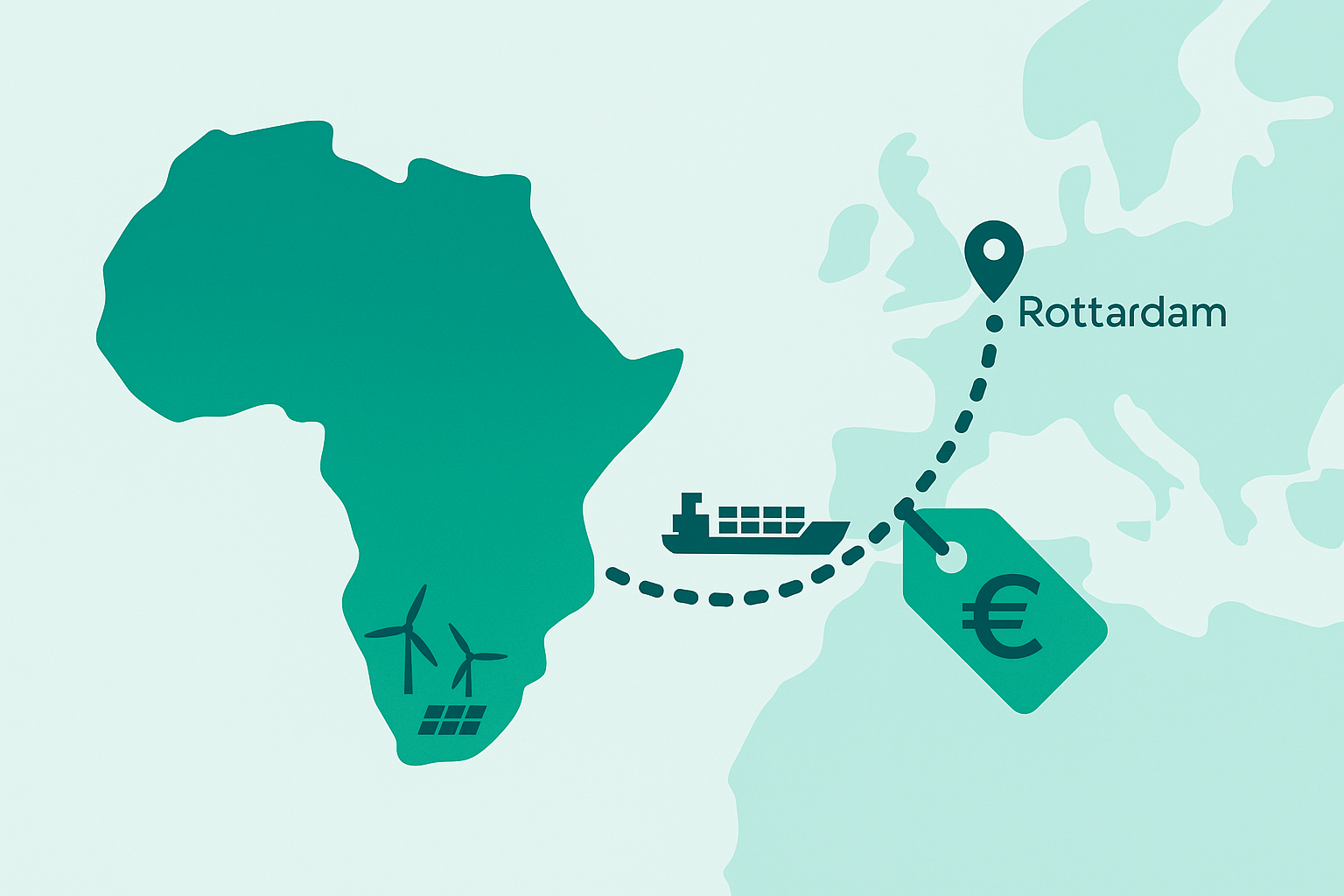Physical Address
304 North Cardinal St.
Dorchester Center, MA 02124
Physical Address
304 North Cardinal St.
Dorchester Center, MA 02124

New analysis suggests the business case is far weaker than the hype and that equity should be front and center.
The topline: A new study in Nature Energy finds that importing green hydrogen from Africa to Europe will be more expensive than many policy pitches assume. Even with de-risking, only a handful of locations may be cost-competitive by 2030. Without it, most projects don’t pencil out.
Europe is counting on green hydrogen to decarbonize heavy industry, shipping, and chemicals. Africa, with world-class wind and solar resources, has been framed as a future export hub. More than 30 projects have been announced across the continent, yet roughly 90% remain at concept or feasibility stage, largely because financing and risk aren’t trivial details; they’re the ballgame.
A team of researchers from Technical University of Munich, Germany and University of Oxford, United Kingdom modeled the full chain for Africa-to-Europe hydrogen via ammonia: production, shipping to Rotterdam, and conversion back to hydrogen. They ran the numbers for more than 10,000 coastal locations in 31 countries and layered in the piece that most models gloss over: realistic financing conditions.
Cost competitiveness is rare. Even with guaranteed European offtake, only a small set of locations, primarily in Algeria, Kenya, Mauritania, Morocco, Namibia and Sudan, may compete on cost by 2030. Financing risk is the swing factor. While many models assume 4–8% cost of capital, the study finds 8–10% even with de-risking and up to the mid-20% range in high-risk markets. That changes project economics dramatically. The price gap remains. The lowest modeled delivered cost, €3.2/kg H₂ in Mauritania, still sits above Europe’s benchmark low bid (~€2.8/kg H₂) from Spain’s 2023 auction, leaving a stubborn competitiveness gap.
The catch: capital isn’t cheap. Green hydrogen is capital-intensive. Interest rates and perceived country risk ripple through every line item, electrolyzers, renewables, transmission, storage, port infrastructure, shipping, and reconversion. In practice, investors price uncertainty, and those premiums can turn a promising levelized cost of hydrogen into a deal-breaker.
Scale doesn’t guarantee shared prosperity. Flagship projects like multi-billion-dollar builds in countries with smaller GDPs raise concerns about who benefits. Without deliberate policy design, Africa could end up exporting green molecules while importing the same old inequities. Local power access, skills development, and resilient value chains need to be part of the mandate, not an afterthought.
Go beyond headline CAPEX and LCOH. Track community benefits, job quality, water use, land impacts, and long-term resilience.
Bottom line: Africa’s green hydrogen story isn’t a no-brainer export play—it’s a narrow, high-stakes opportunity that depends on finance, policy design, and justice. For Europe, the cheapest molecules may still be closer to home. For Africa, the smartest molecules are the ones that power inclusive, durable growth.
Source: “Mapping the cost competitiveness of African green hydrogen imports to Europe,” Nature Energy.